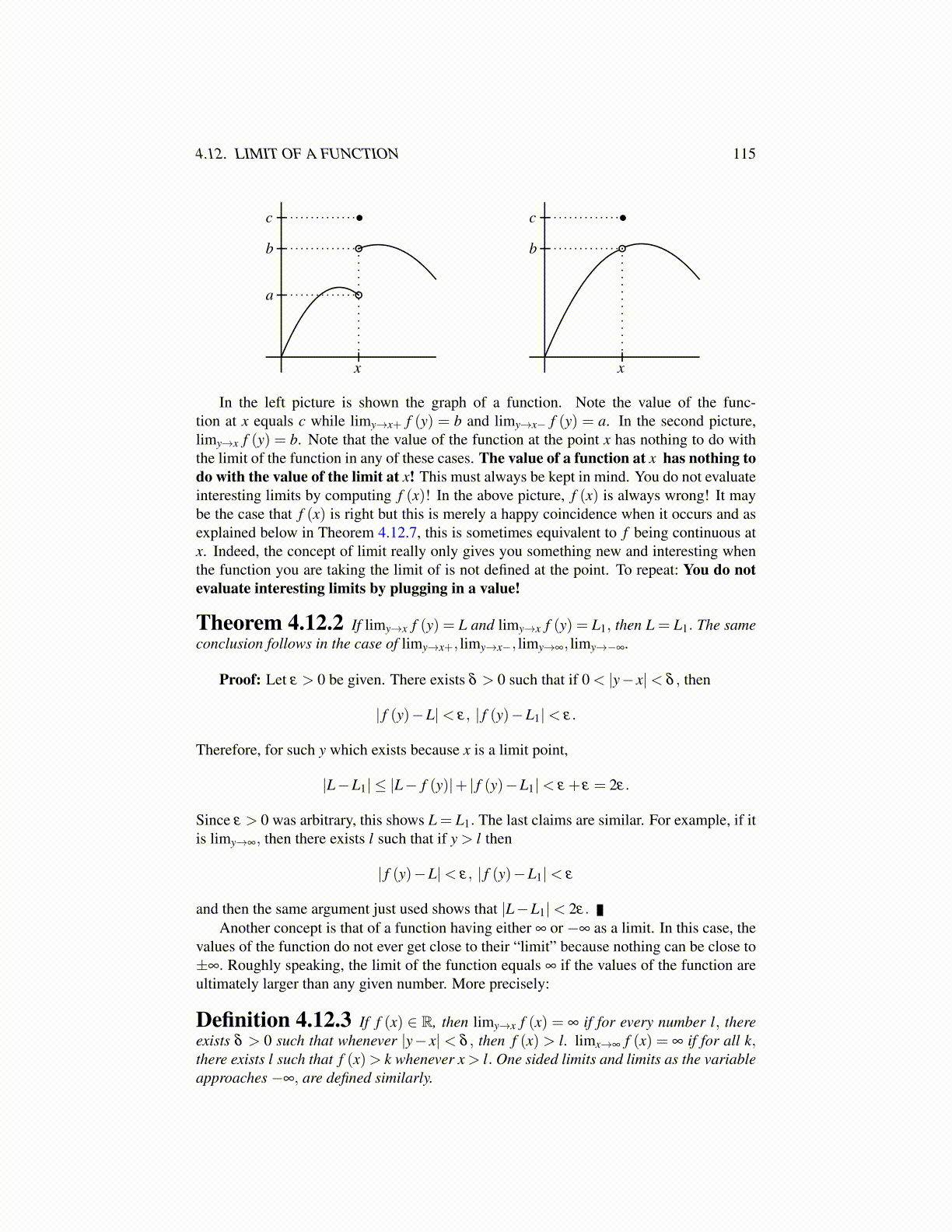
4.12. LIMIT OF A FUNCTION 115
x
a
b
•c
x
b
•c
In the left picture is shown the graph of a function. Note the value of the func-tion at x equals c while limy→x+ f (y) = b and limy→x− f (y) = a. In the second picture,limy→x f (y) = b. Note that the value of the function at the point x has nothing to do withthe limit of the function in any of these cases. The value of a function at x has nothing todo with the value of the limit at x! This must always be kept in mind. You do not evaluateinteresting limits by computing f (x)! In the above picture, f (x) is always wrong! It maybe the case that f (x) is right but this is merely a happy coincidence when it occurs and asexplained below in Theorem 4.12.7, this is sometimes equivalent to f being continuous atx. Indeed, the concept of limit really only gives you something new and interesting whenthe function you are taking the limit of is not defined at the point. To repeat: You do notevaluate interesting limits by plugging in a value!
Theorem 4.12.2 If limy→x f (y) = L and limy→x f (y) = L1, then L = L1. The sameconclusion follows in the case of limy→x+, limy→x−, limy→∞, limy→−∞.
Proof: Let ε > 0 be given. There exists δ > 0 such that if 0 < |y− x|< δ , then
| f (y)−L|< ε, | f (y)−L1|< ε.
Therefore, for such y which exists because x is a limit point,
|L−L1| ≤ |L− f (y)|+ | f (y)−L1|< ε + ε = 2ε.
Since ε > 0 was arbitrary, this shows L = L1. The last claims are similar. For example, if itis limy→∞, then there exists l such that if y > l then
| f (y)−L|< ε, | f (y)−L1|< ε
and then the same argument just used shows that |L−L1|< 2ε.Another concept is that of a function having either ∞ or −∞ as a limit. In this case, the
values of the function do not ever get close to their “limit” because nothing can be close to±∞. Roughly speaking, the limit of the function equals ∞ if the values of the function areultimately larger than any given number. More precisely:
Definition 4.12.3 If f (x) ∈ R, then limy→x f (x) = ∞ if for every number l, thereexists δ > 0 such that whenever |y− x| < δ , then f (x) > l. limx→∞ f (x) = ∞ if for all k,there exists l such that f (x)> k whenever x > l. One sided limits and limits as the variableapproaches −∞, are defined similarly.